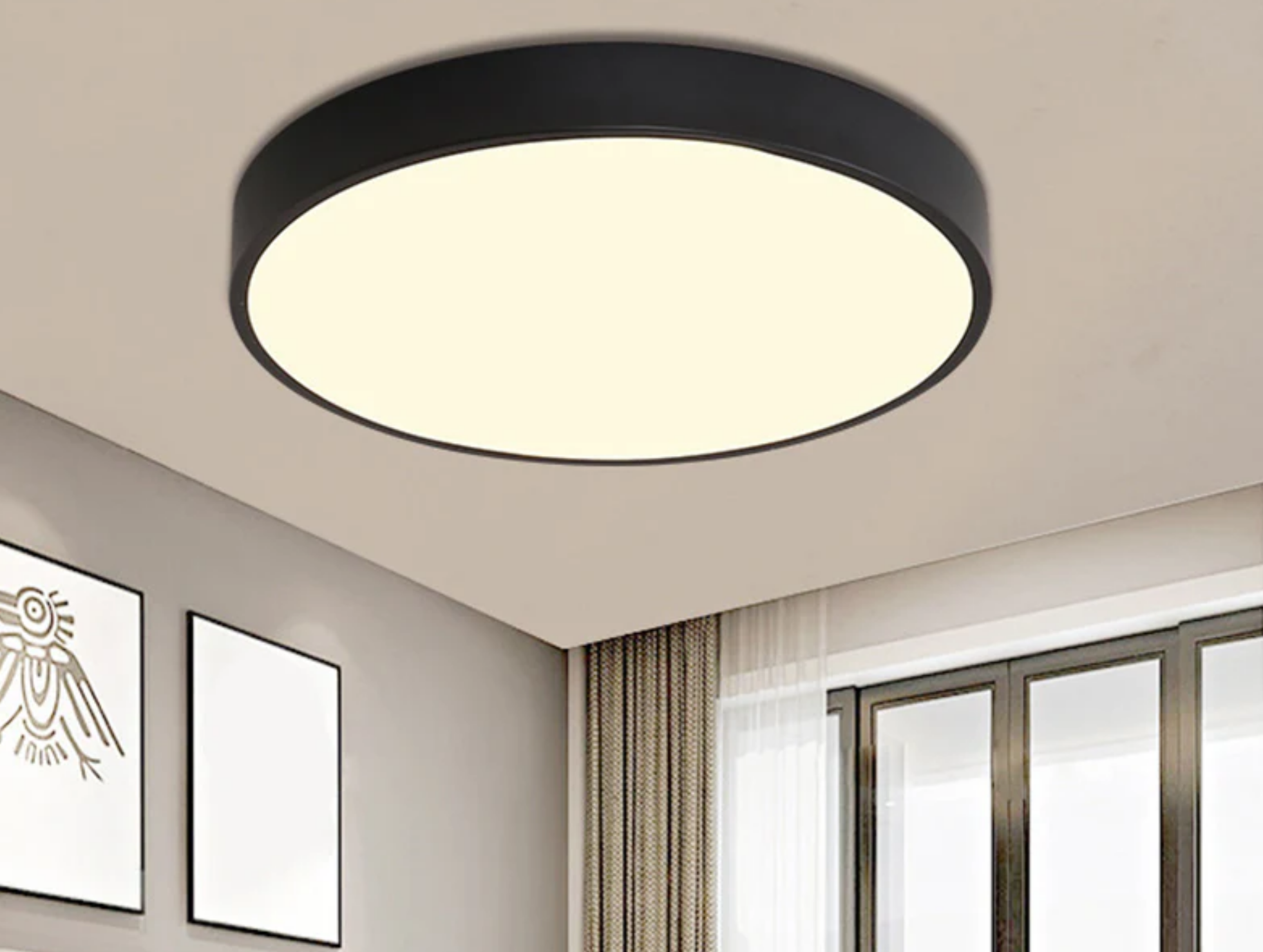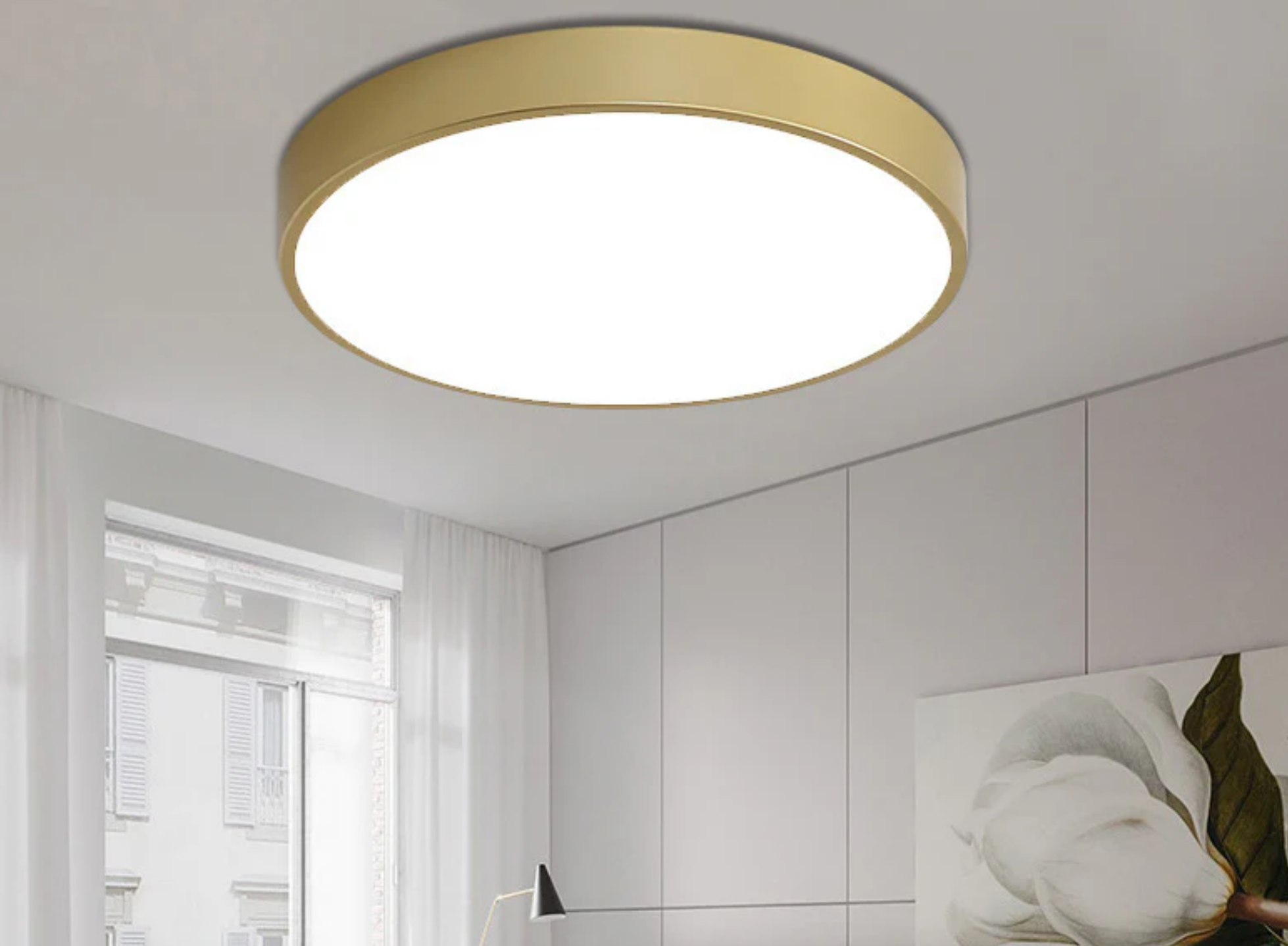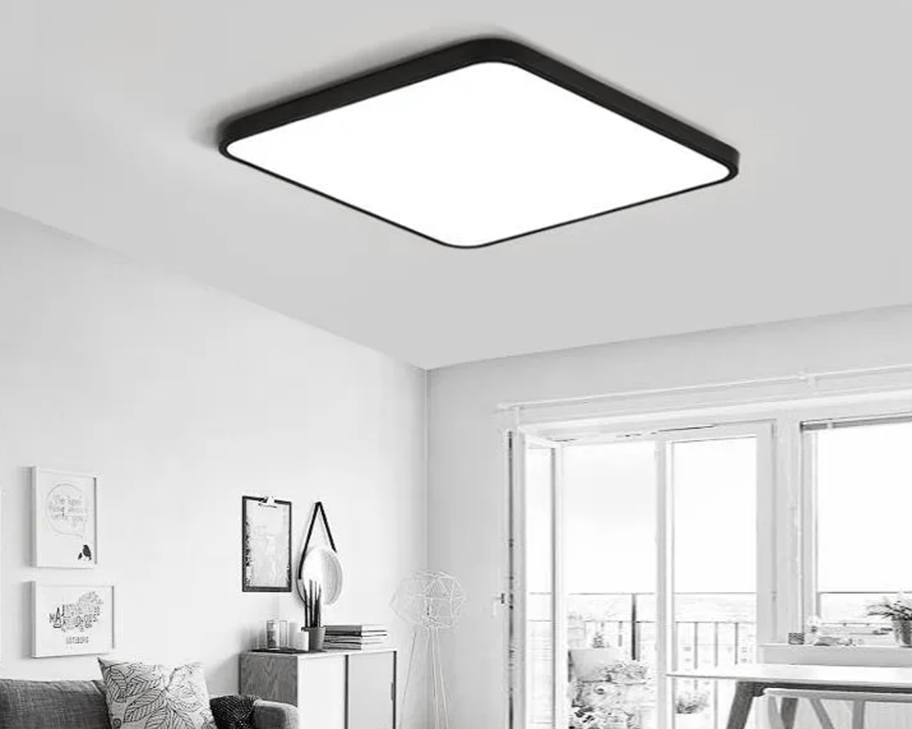The ceiling lighting landscape has evolved dramatically, with LED technology driving innovations that blend aesthetic sophistication with groundbreaking utility. From ultra-thin profiles to specialized functionalities, today’s LED ceiling lights are redefining spatial design across residential and commercial spaces.

1. Architectural Harmony Through Design
Contemporary LED solutions prioritize seamless integration with interior architecture:
Ultra thin LED ceiling light systems (as slim as 0.4″) create floating illumination effects in modern minimalist spaces;Slim circular LED ceiling light x large variants (up to 48″ diameter) make dramatic statements in hotel lobbies and open-plan offices;The led ceiling light black and gold collection merges Art Deco influences with LED efficiency, offering luxe accent lighting for high-end interiors;These designs challenge traditional lighting norms, with frameless white led ceiling light panels becoming popular for creating “invisible” ambient lighting in galleries and studios.
2. Precision-Tuned Illumination
Advanced engineering enables targeted lighting solutions:
Ultra bright LED ceiling light arrays (15,000+ lumens) illuminate industrial warehouses without glare;Warm white led ceiling light systems (2200-2700K) replicate candlelit warmth for restaurants and lounges;Range led ceiling light technology allows adjustable beam angles (15°-120°) from a single fixture;The Trinity LED ceiling light exemplifies this versatility, combining three lighting modes – task, ambient, and accent – within a unified 28W system.

3. Smart Integration & Specialized Applications
Modern LEDs transcend basic illumination:
USB LED ceiling light models integrate charging ports and IoT connectivity for smart office ecosystems;UV LED ceiling light systems (270-280nm wavelength) provide hospital-grade disinfection in healthcare facilities;Weather-resistant variants withstand 98% humidity for poolside and spa installations;Commercial applications are particularly transformative. A case shows ultra bright LED ceiling light panels reducing energy costs by 62% compared to legacy systems, while adaptive warm white settings ease jet lag through circadian lighting algorithms.
4. The Sustainability Equation
LED advancements align with global net-zero targets:
95% recyclable aluminum bodies in premium led ceiling light black and gold fixtures;Solar-ready range led ceiling light systems for off-grid communities;100,000-hour lifespans (11+ years at 24/7 operation) across product lines;The environmental impact is measurable – replacing ten 60W; Incandescent fixtures with ultra thin LED ceiling light alternatives saves 4.8 tons of CO₂ annually, equivalent to planting 220 trees.
5. Installation Revolution
Next-gen mounting systems simplify deployment:
Magnetic snap-on panels for slim circular LED ceiling light x large models;Plug-and-play connectors in USB LED ceiling light units;Retrofit kits converting traditional recessed cans to LED in <15 minutes;These innovations have reduced average installation costs by 40% since 2022, accelerating LED adoption in both residential renovations and commercial retrofits.

6. Future Horizons
Emerging trends suggest:
Self-healing LED coatings that repair minor scratches;UV LED ceiling light hybrids that eliminate pathogens while providing visible light;Transparent OLED variants turning entire ceilings into luminous surfaces.
From the discreet elegance of ultra thin LED ceiling light solutions to the technical prowess of UV-integrated systems, modern LED ceilings represent a paradigm shift in architectural lighting. They’re no longer mere utilities but intelligent design elements that enhance spatial functionality while addressing critical environmental and health priorities. As these technologies converge with smart building systems, the ceiling is poised to become the next frontier in responsive, human-centric design.


